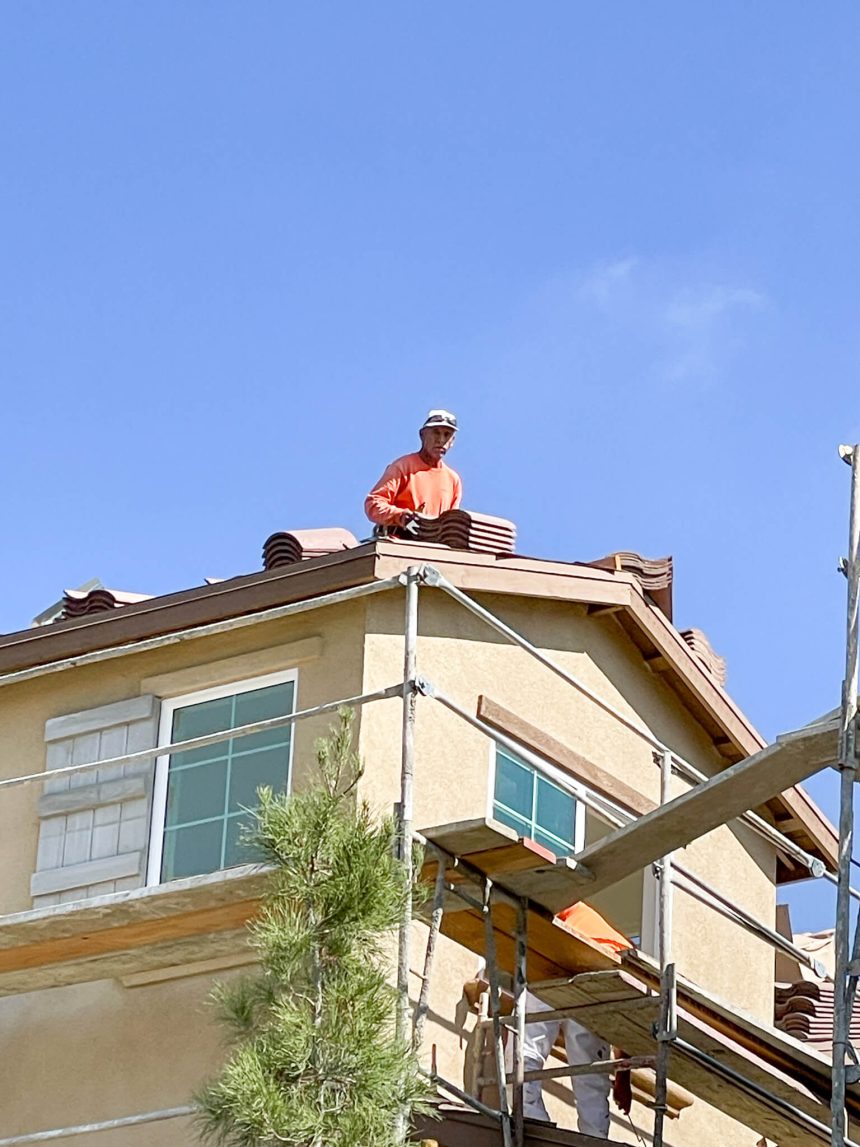Menifee Grows Up
Menifee in 15 Years Has Become the 6th Largest City in Riverside County
As Menifee celebrates 15 years of cityhood, The Progress is looking back at the roots of the fledgling city. In Part One (October 20) , we explored the mining and agrarian 20th Century through the eyes of still-living, early settlers. In Part Two (October 27), we documented the transition to an exurb, with the arrival of Del Webb’s Sun City in 1962 through the yearning for cityhood. Part Three (November 3) brings us current, with one of the fastest growing cities in California.
By Don Ray
In the relatively short time, historically speaking, since Alan Shepard took his sub-orbital flight, the sparsely populated wheat fields of the Menifee Valley have transitioned into one of the fastest growing cities in the most populated state in the Union.
There were baby steps at first. The one-time owner of the Bronx Bombers, New York Yankees, and builder of mobster Bugsy Siegel’s groundbreaking Flamingo Hotel in a parched outpost called Las Vegas, eyed the Valley as the 2nd location for his eponymously named Del Webb planned community for retirees from around the globe.
Loosening its belt within a couple of decades to accommodate more planned communities, propelled by relatively cheap — for Southern California — land for development, the inevitable seemed to be just over the horizon.
Locals wanted control. The county was increasingly willing to cede it. And fifteen years ago, the City of Menifee was born. Only a handful of votes denying the name to be Menifee Valley.
But the infant wasn’t fully prepared to pull up its britches and sit at the adult table.
In its exuberance to strike out on its own, there were a few items unresolved. Where to live, shop, gather, play, learn, how to get around – (housing, retailers, civic center, parks, schools, roads).
And of course, the first step in independence, how to make a living. Also known as a tax base, to support all the above.
There were fits and starts, debates, messy politics – growing pains. But 15 years in, Menifee describes itself as a developing model city.
Ever expanding housing, retail, and corporate commerce, a respected and developing education base, destination parks, a city hall, and police force — all contributing to an expanding tax base, responsible for a record two-year budget.
Graduating to a functioning city, the coming years present just as great a challenge. How to afford and provide ever-evolving services, while maintaining its image as a functional and livable city.
Fifteen years ago, when Menifee became California’s newest municipality, Lesa Sobek had voted for incorporation and was eager to see the improvements that would come to her community.
Today, she’s a city councilwoman, but she had no such aspirations back then. She recalls how, then, the fledgling city council was in turmoil — so much so that her mother in Riverside was reading about it in the newspaper there.
“I remember she called me up a couple of times and said, ‘What’s going on in your city?’”

That inspired her, she says, to do what she could to bring the members of the community together — and she did it by convincing city officials to let her start a Military Flag Program which would display the names and faces of Menifee veterans and active-duty personnel on lamp posts around the city.
“Everybody loves our military men and women,” she said.
Her involvement in the new city would lead to her becoming a member of the Planning Commission, and eventually, to becoming a city councilwoman.
Attorney Bob Karwin also served on the Planning Commission, and he too is now a City Council member.
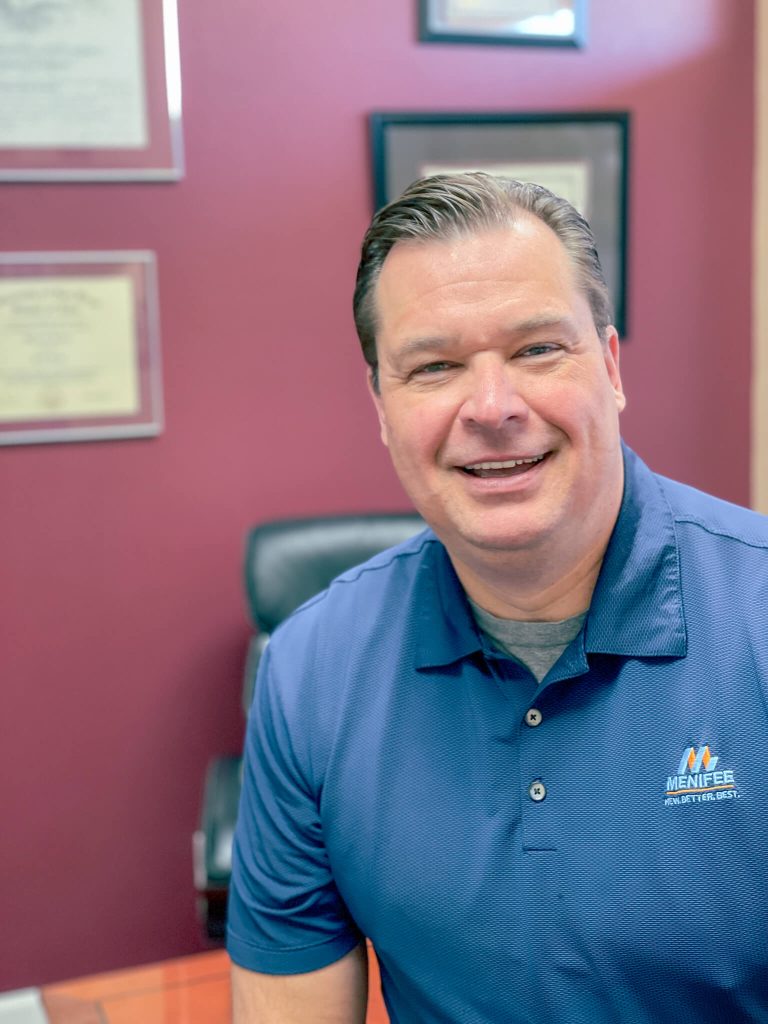
He says that Menifee planners made certain that the city would control much more of the property that’s adjacent to the Interstate.
“We created Economic Development Corridors along the freeway. We tried to designate the areas around the freeway for commercial development rather than residential.
“We want to generate more income to the city — it gives the city more control over people coming in and out of the city. That helps us with traffic. It helps us with growth. It helps us with frontage. It helps us maximize the best use of the properties.”
“From Scott Road all the way up to Ethanac, we’ve got zones that are designated for different types of business and commercial use — for how suitable they are to the different places,” he said. “And there’s different characters —a Southern Gateway has more of a light industrial development. The Northern Gateway up toward Ethanac has more warehouse distribution. There’s retail, there’s incoming businesses along Longhorn Road in that corridor. There’s a lot of great developments going on there, because we have reserved that land for that purpose.”
“I think the growth took everybody by surprise,” Karwin said.
It begs the question of whether encouraging businesses and jobs brings in more people, or that the increasing population needs the city’s help in creating jobs and service-providing businesses.
It stands to reason that the newly elected and appointed city fathers were looking for the best of both worlds. For example, they clearly knew that the new commercial endeavors would lead to an increase in heavy trucks coming and going through Menifee.
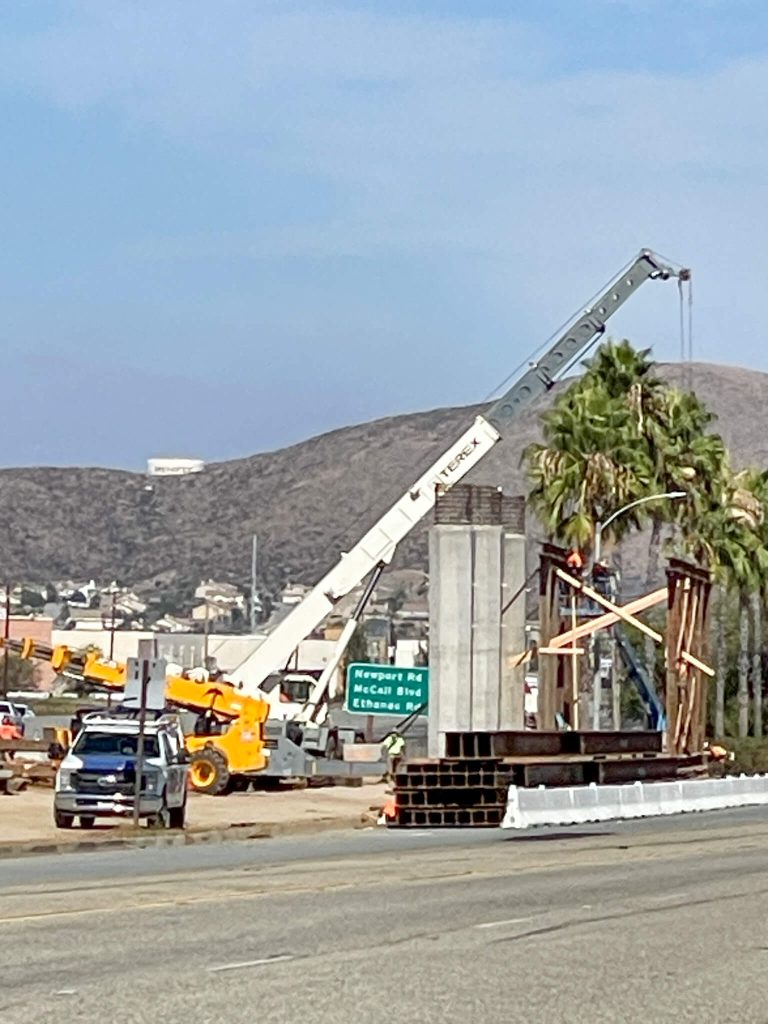
“We have found that the vast amount of trucking comes from the north of us, towards the south, “Karwin said. “So we wanted to find a way to capture some of the desire that the trucking companies had for distribution . . . for jobs and the tax base and those kinds of things.”
He said that the trucks would come from the north where they would be able to enter only the northern part of Menifee.
“That’s why the distribution centers were more set in the northern part than the southern parts,” he said, “so that way we’d be able to minimize the truck traffic going the length of the city.”
One of Menifee’s success stories, Karwin says, was establishing its own police department in 2000.
“Starting our own police department,” he says, “was something that people didn’t think we could do, and so it wasn’t considered right out of the gate. It turned out to be the best decision the city has ever made.
“We couldn’t have done a lot of things from a public safety standpoint if we hadn’t started our own police department.”
Lesa Sobek agrees.
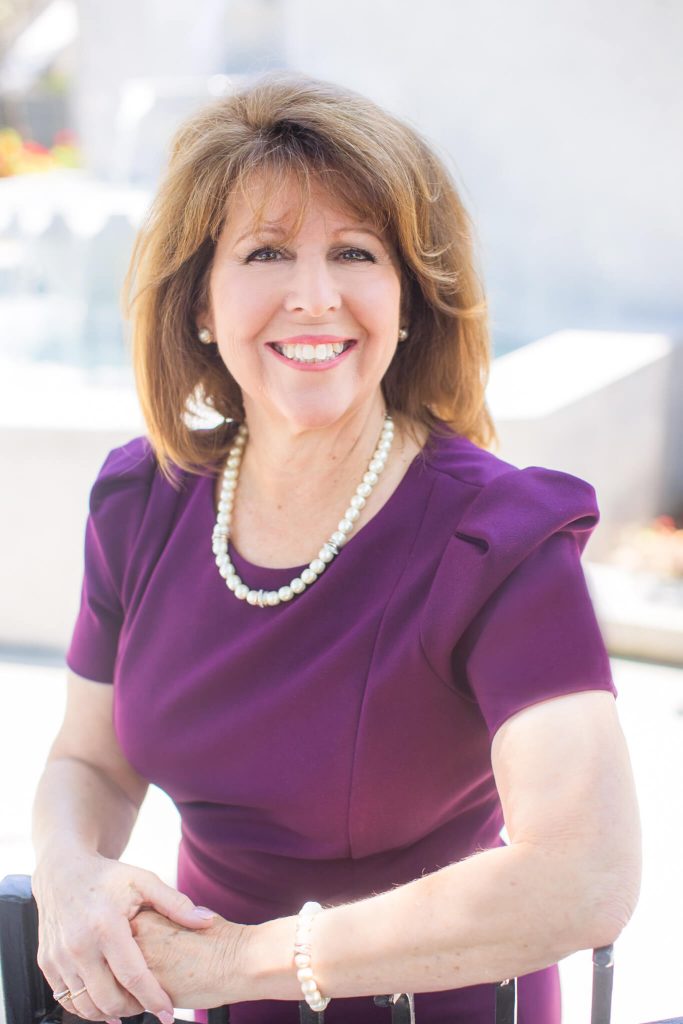
“One of the proudest moments as a council person was being able to start our police department — July 1, 2020 — during the pandemic, during the unrest that was going on in our country.”
Because of the George Floyd protests across the entire country, and COVID, she said, they waited until the day before the grand opening of the police department to announce there would be six parades through six parts of the city.
“They didn’t know what to expect,” she said. “I was in one of the police cars, and I’ll tell you, people had lined the streets with posters that said, ‘Welcome,’ ‘We love you,’ ‘We’re so happy you’re here.’
“It was one of the most heart-warming things I’ve ever seen.”
Councilman Bob Karwin concedes that one of the biggest lessons learned in planning the new city was not planning for its rapid growth.
“How fast it happened,” he said. “I don’t think anybody anticipated that. When people start a business, or a city, or any organization, they don’t plan on the best-case scenario. They plan on the worst-case scenario. When you start a business, you don’t say, ‘Hey, look, if the first day you get two million orders, what are you going to do?’
“People say, ‘Well, that’ll never happen.’ And then if it does, you’re underwater,” Karwin said.
“So, I think, lessons learned, I wish that if the founders of our city had had the foresight to know how fast this thing was going to grow — to get everybody ready for it — we could probably double our city staff, personnel wise.
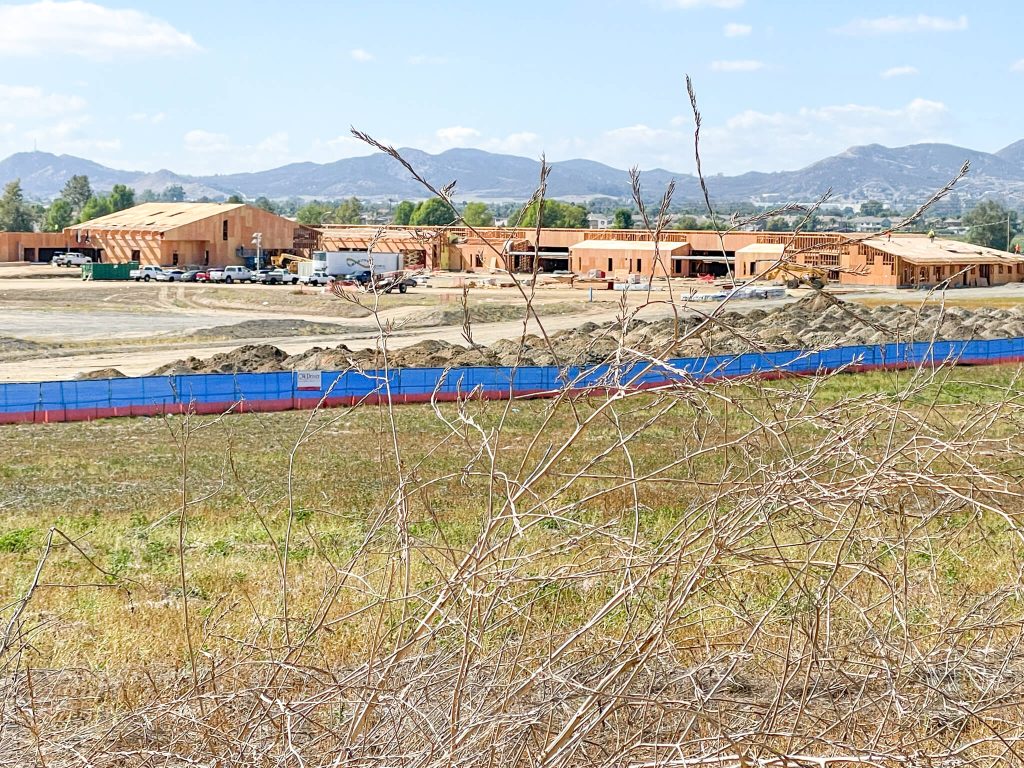
By next year, Menifee residents will see the completion of two new elementary schools and a middle school — all part of the effort to keep up with the continuing growth.
Councilman Karwin says the completion of the Holland Road overpass at the 215 freeway will not only relieve congestion at the Newport Road overcrossing, but it will also create an easier way for Menifee residents and Mt. San Jacinto College students to get access to the shopping centers on the west side of the freeway.
Despite the best plans that Menifee can make to deal with local traffic, Karwin says, the city has no control over the massive and rapid growth that’s taking place in Winchester and other areas to the east of city limits.
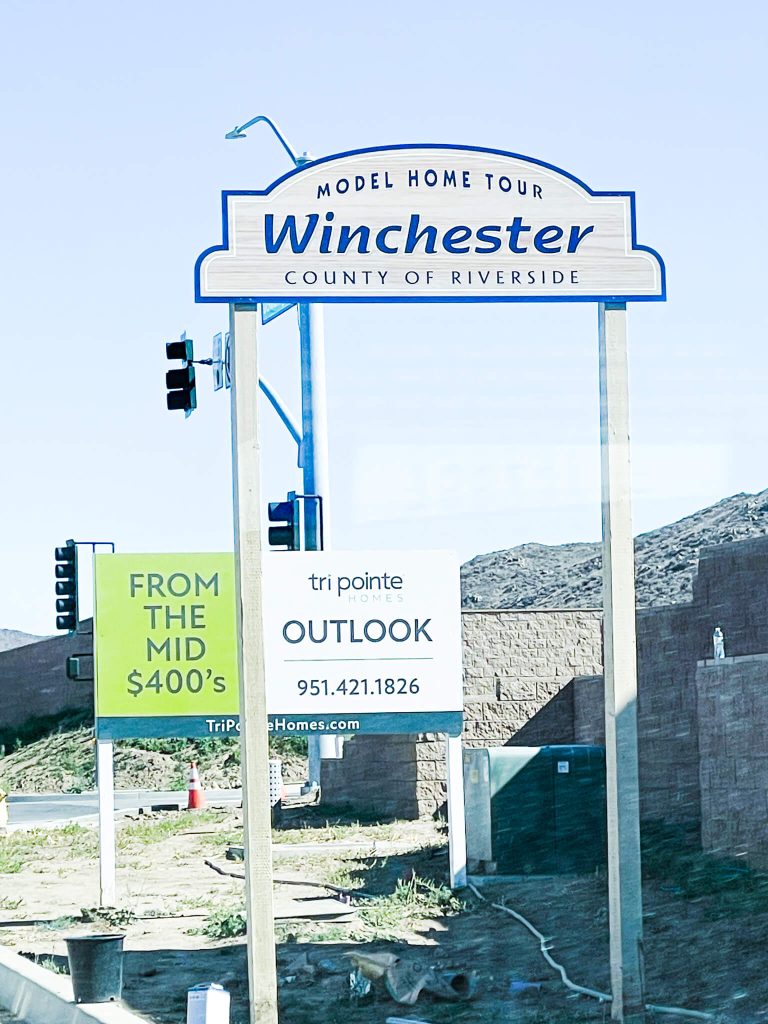
“Those people who live there are going to need to get through Menifee to get to the freeway, to get either north to Riverside and on to Los Angeles or Orange County or south to go to San Diego.”
Karwin is confident that Menifee’s way of life is not likely to decline.
“We are not getting greedy. We’re not trying to fill the city up. We’re not trying to jam it full of cars and businesses and those kinds of things. We don’t want to see development moving faster than people are used to.”
The Progress extended requests for the perspectives of elected and unelected City of Menifee officials alike. To date, Councilmembers Sobek and Karwin were the only ones to respond with answers for this report.
This publication will continue to ask questions important to Menifee residents and will report their positions. Likewise, we’ll share the names of those who decline to answer and contribute their thoughts for the public and voters to consider.
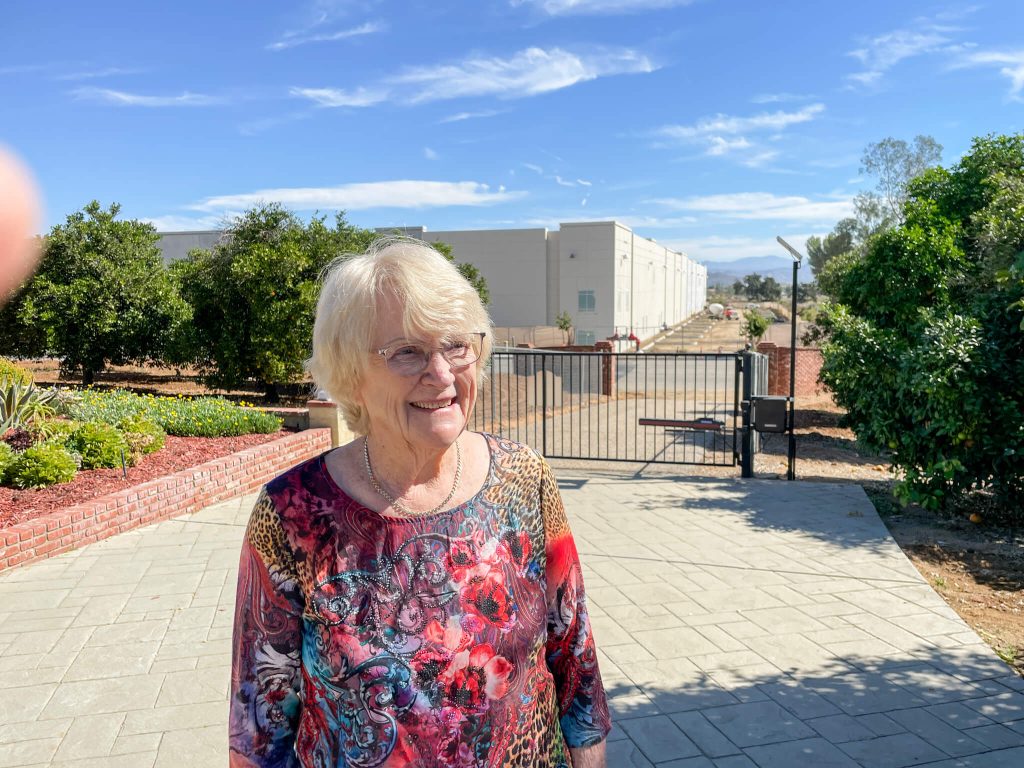
In Part One of this series, we introduced you to long-time resident Betty Bouris, who’s family raised wheat for decades on the land where new developments, businesses and commercial buildings now exist.
It turns out that this rapid growth was no surprise to her.
“We expected this,” she told us. “This was actually planned for you know 30 years ago that this was gonna all be industrial, commercial.”
She said that the commercial buildings across the street from the original farmhouse she still occupies took away her view of the valley and the mountains to the east.
“So anyway, we got to enjoy it. I’ve enjoyed it for 70 years, Bouris said.
“The view? I can still see the San Bernardino mountains.”
For Part One of the Series Click Here and For Part Two Click Here.


